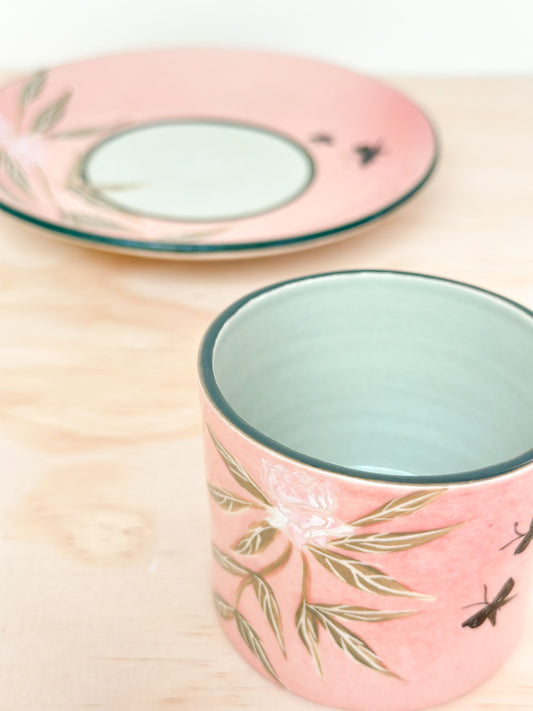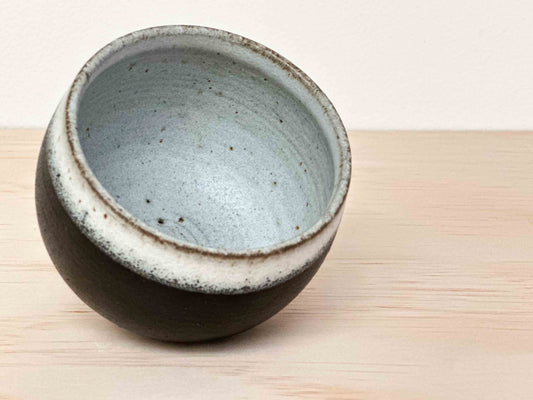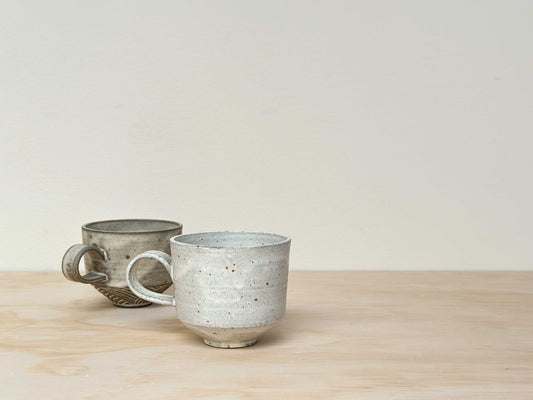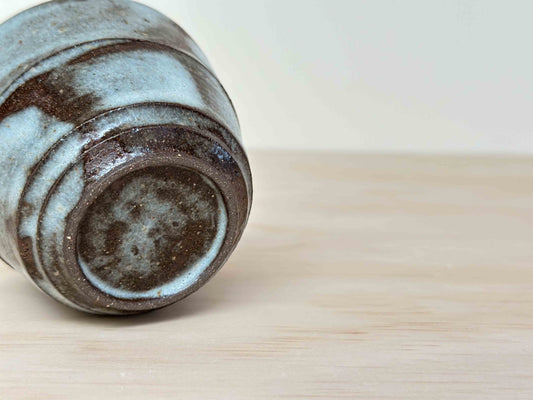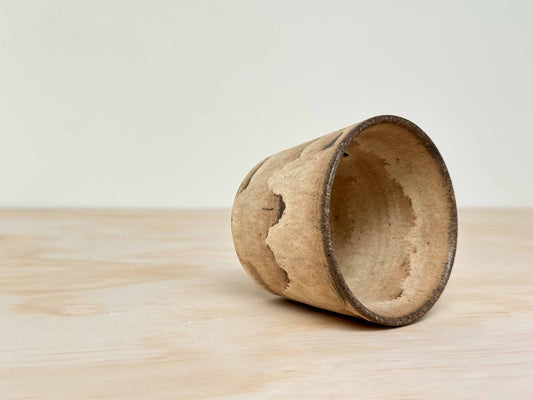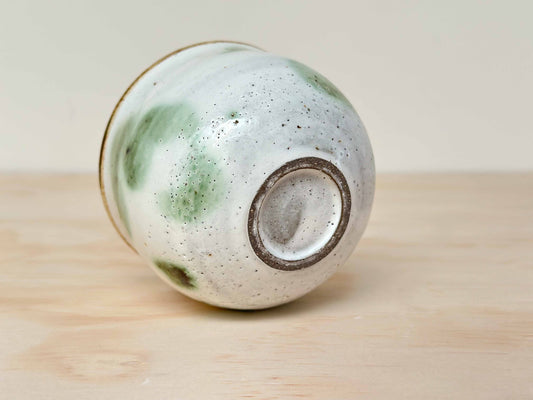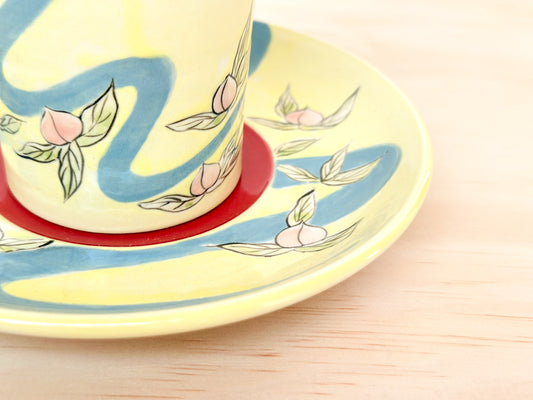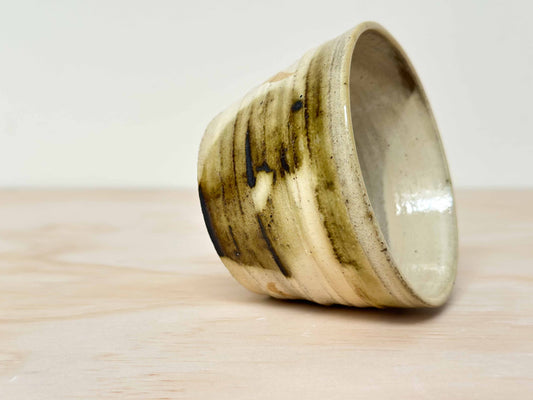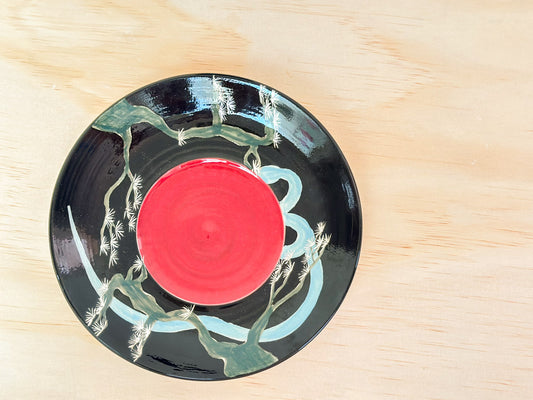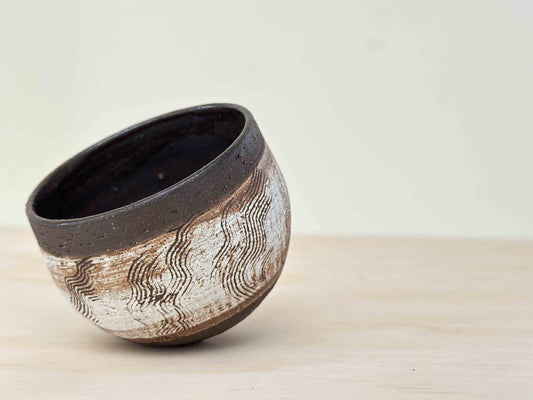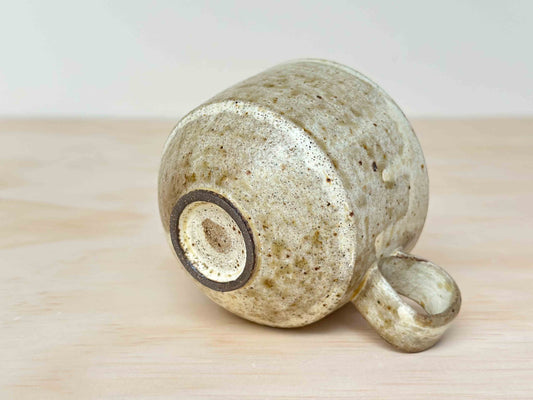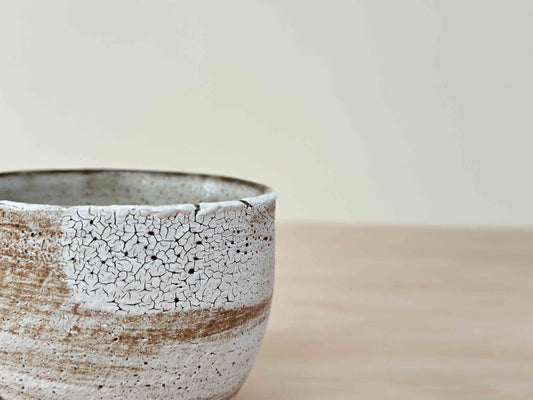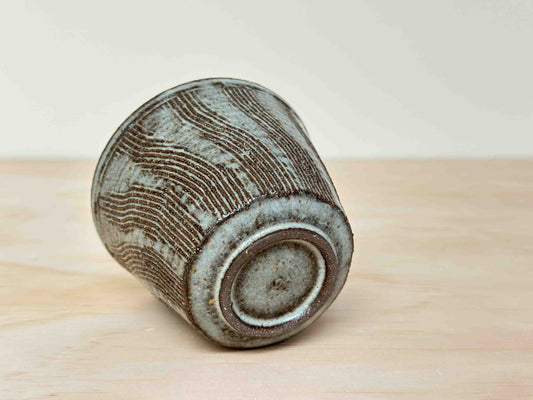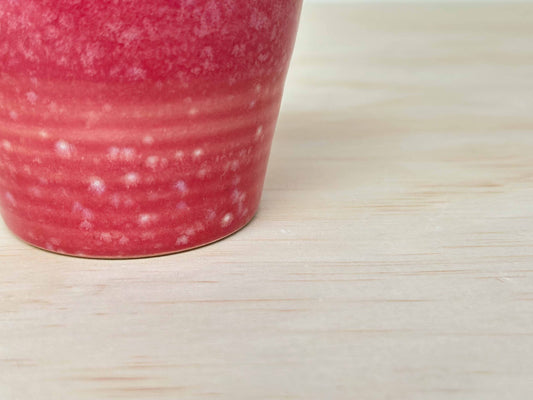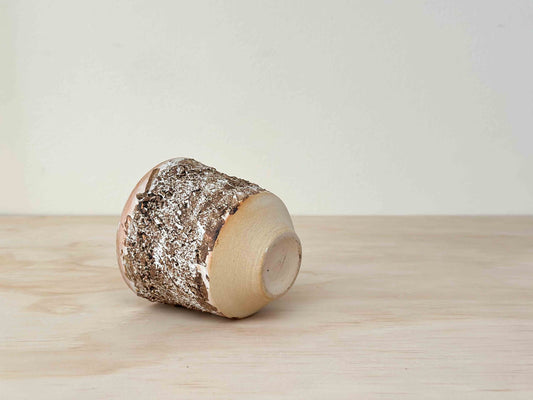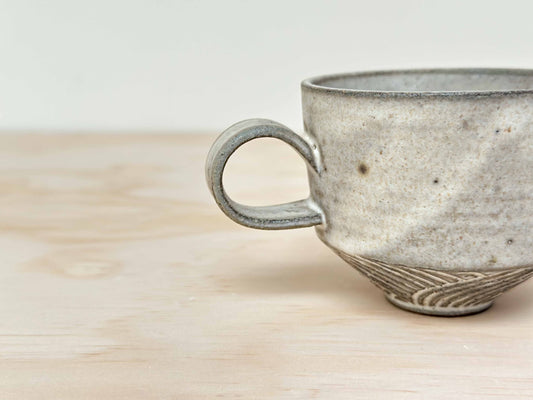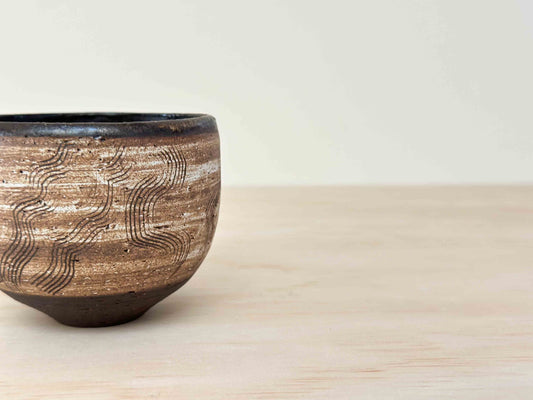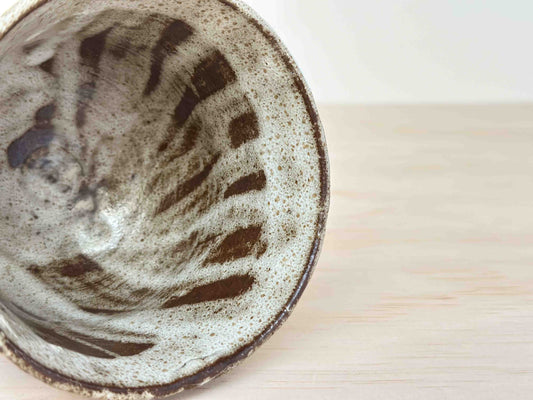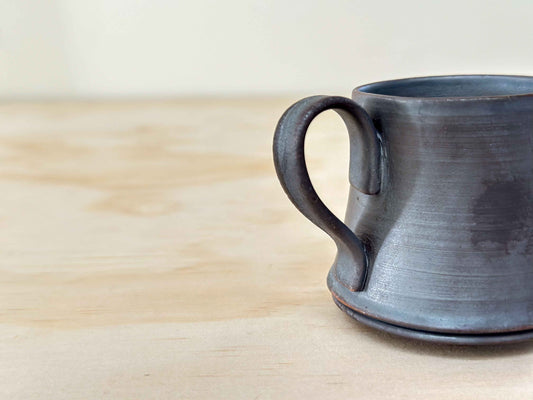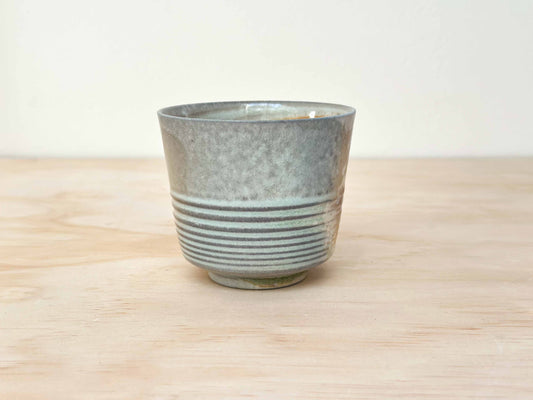Collection: Coffee Cups & Mugs
Explore our collection of handcrafted coffee cups and mugs, designed to elevate your daily brew. From wood-fired ceramics to minimalist stoneware, each cup blends artistry with functionality. Perfect for espresso, pour-over, and speciality coffee lovers seeking unique, timeless craftsmanship.
coffee cup, coffee mug, handmade coffee cup, handcrafted coffee cup,handmade coffee mug, handcrafted coffee mug, coffee set

-
Handcrafted Coffee Cup & Saucer | 220mL | Dreaming Butterfly
Regular price $125.00 AUDRegular priceUnit price / per -
Handcrafted Coffee Cup | 270mL | Reynisfjara Dream
Regular price $49.00 AUDRegular priceUnit price / per -
Handcrafted Coffee Mug | 250mL | Snow of Alpine
Regular price $60.00 AUDRegular priceUnit price / per -
Handcrafted Coffee Cup | 220mL | Indigo Cloud Poetry
Regular price $54.00 AUDRegular priceUnit price / per -
Handcrafted Coffee Cup | 234mL | Ancient Landscape Scroll
Regular price $54.00 AUDRegular priceUnit price / per -
Handcrafted Coffee Cup | 200mL | Emerald Breeze
Regular price $59.00 AUDRegular priceUnit price / per -
Handcrafted Coffee Cup & Saucer | 270mL | Peach River
Regular price $145.00 AUDRegular priceUnit price / per -
Handcrafted Coffee Cup | 198mL | Autumn Field
Regular price $59.00 AUDRegular priceUnit price / per -
Handcrafted Coffee Cup & Saucer | 270mL | Pine Serpent
Regular price $149.00 AUDRegular priceUnit price / per -
Handcrafted Coffee Cup | 230mL | Coastal Reverie
Regular price $48.00 AUDRegular priceUnit price / per -
Handcrafted Coffee Cup | 170mL | Ancient River
Regular price $43.00 AUDRegular priceUnit price / per -
Handcrafted Coffee Mug | 210mL | Forest Snow
Regular price $56.00 AUDRegular priceUnit price / per -
Handcrafted Coffee Cup | 170mL | Gobi Mist
Regular price $43.00 AUDRegular priceUnit price / per -
Handcrafted Coffee Cup | 215mL | Terra Trails
Regular price $45.00 AUDRegular priceUnit price / per -
Handcrafted Coffee Cup | 215mL | Ocean Drift
Regular price $55.00 AUDRegular priceUnit price / per -
Handcrafted Coffee Cup | 230mL | Crimson Snowfall
Regular price $48.00 AUDRegular priceUnit price / per -
Handcrafted Coffee Cup | 260mL | Frozen Titan
Regular price $41.00 AUDRegular priceUnit price / per -
Handcrafted Coffee Mug | 210mL | Mist Morning
Regular price $56.00 AUDRegular priceUnit price / per -
Handcrafted Coffee Cup | 210mL | Ember Echo
Regular price $39.00 AUDRegular priceUnit price / per -
Handcrafted Coffee Cup | 320mL | Moonlight Harmony
Regular price $43.00 AUDRegular priceUnit price / per -
Handcrafted Coffee Cup | 90mL | Sentinel | Wood Fired Coffee Cup
Regular price $49.00 AUDRegular priceUnit price / per -
Handcrafted Cup | 220mL | Ice Fire | Wood Fired Tea Cup | Wood Fired Coffee Cup
Regular price $49.00 AUDRegular priceUnit price / per
-?-
FAQ
Is it necessary for us to choose a vessel we love for drinking tea, coffee or serving a dish?
In the rituals of tea, coffee and dining , the vessels we choose—be it a delicate porcelain teacup or a sturdy ceramic coffee cup, mug, or an elegantly crafted plate—play a pivotal role that extends beyond mere functionality. These utensils are integral to the sensory experience, cultural significance, and even the flavour profile of the beverages and dishes they contain.
- Emotional and sensory significance—A whole sensory experience is created from the physical pleasure of holding a well-made cup, the visual attractiveness of its design, and the scent that permeates from its brim. One's impression of the beverage can be influenced by the weight, texture, and shape of the vessel, therefore sipping tea or coffee becomes a multimodal pleasure. Furthermore, the vessel's appearance can arouse feelings, create atmosphere, and improve the whole enjoyment of the time.
- Ceremonial and cultural relevance—Many societies, particularly in conventional tea rituals, have great symbolic connotations for the equipment used. For example, the choice of particular teapots and cups in Chinese tea culture not only expresses the philosophical and artistic ideals of the society but also reflects the issue of habit. Making and presenting tea becomes a ceremonial activity whereby every vessel has a meaning and function, therefore promoting respect, awareness, and connection among the participants.
- Effect on Quality and Flavour—The taste and quality of tea and coffee containers significantly influence their design and materials, therefore impacting the beverage. Often chosen for their ability to preserve the taste of the beverage, porcelain cups with their flat surfaces stop flavours from absorbing. On the other hand, some materials might cause unpleasant tastes or fail to keep heat sufficiently, therefore changing the expected sensation. Furthermore, influencing the fragrance concentration and temperature retention is the vessel's form and size, thereby indirectly altering the flavour profile the drinker will taste.
What are wood-fired ceramics?
Wood firing, or "Chai Shao" (柴烧), is an old ceramics firing method where wood is used as the main fuel source. The process is loading ceramic work into a kiln and firing it by burning wood to achieve the necessary temperatures for vitrification. When wood is combusted, the ash and minerals of the burned wood are in contact with the clay surfaces and create interesting textures and natural ash glazes that give each work its individuality.
Wood-fired ceramics in their most basic form entail loading clay work into kilns and heating them through the combustion of wood. As the fire burns, wood ash falls over the pottery, merging to create a natural glaze that imbues every piece with a unique character. The outcome? No two pieces ever look alike; each is a tale in itself of fire and alchemy.
Wood firing Vs. Electric kiln firing Vs. Gas kiln firing
Electric kiln firing uses electricity to fire the kiln. The process gives accurate temperature and atmosphere control, resulting in even and predictable outcomes. Electric kilns are preferable since they are efficient and can duplicate desired outcomes, making them well-suited for mass production.
Gas kiln firing utilises fuels like natural gas or propane. Like electric kilns, gas kilns offer controlled atmospheres, and artists can manage oxidation and reduction atmospheres to achieve desired effects. Though gas firing offers greater flexibility than electric kilns, it still allows for a level of consistency not normally inherent in wood firing.
This choice among these firing methods greatly affects the visual and tactile character of the finished ceramics. Wood-fired pieces are celebrated for their natural, raw beauty, with surfaces that bear the unintentional marks of ash deposits and flame patterns. This unpredictability is in line with the wabi-sabi aesthetic, which finds beauty in impermanence and imperfection. Electric and gas-fired ceramics, on the other hand, have uniform glazes and textures, which are hallmarks of the controlled nature of their creation.
Including wood-fired ceramics in a collection or practicing them involves more than just admiring their beauty; it involves appreciating a centuries-old tradition that reveres the interaction between the human hand and the power of nature. Each work is a physical link to the ancient processes of ceramic making, infused with its own personal history based on fire, ash, and the touch of the artist.
How to use and care for these vessels?
- Before using, we recommend rinsing with warm water because some unglazed wood-fired ceramics may absorb liquids over time—consider seasoning the cup by soaking it in warm water for a few hours.
- Hand wash with mild detergent and warm water. Avoid using abrasive sponges.
- Not all wood-fired cups are dishwasher-safe; hand washing is recommended.
- Avoid soaking unglazed areas for extended periods to prevent excessive absorption.
- Gradual temperature changes are best. Please avoid sudden temperature shocks (e.g., pouring boiling water into a cold cup) to prevent cracking.
- Most wood-fired ceramics are not microwave-safe due to natural minerals in the clay. We do not recommend using them in the microwave.


